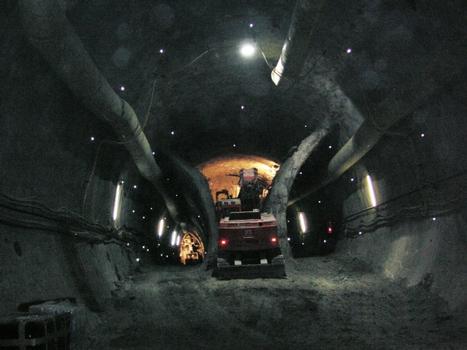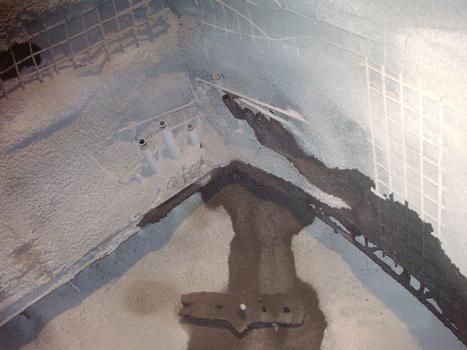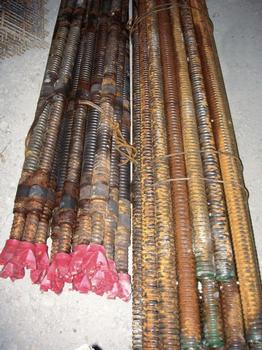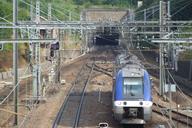Encroaching water and sand successfully stopped in the Lainz Tunnel in Vienna, soil consolidated
The application of injection and sealing agents including the appropriate equipment and machines from TPH Bausysteme GmbH is certainly versatile. This was underscored by procedures which successfully contained encroaching water and sand at the Lainz Tunnel in Vienna.
The 6.5 km long Lainz Tunnel in Vienna was numbered among the most important ÖBB rail projects of recent years. The overall project involved various tunnelling methods with the contract section LT31 Maxing (JV Hochtief, Alpine and Beton- und Monierbau) produced by cut-and-cover. After driving roughly 165 m of the approx. 3 km long part-section in soft ground with groundwater and an installed drainage system, for the first time water and sand poured in from the roof of the crown of the parallel running northern wall heading.
Excavation came to a halt and an attempt to control the ingressing water through 25 to 35 m long drainage drill-holes. However, it remained constant at 0.8 to 2.0 l/s for weeks on end. The geological longitudinal section made it obvious that a 1 m thick layer of water-impermeable rock would be found roughly 1 m above the roof, which dipped into the tunnel profile in the direction of the drive with a layer saturated with fine sand located above.
An acrylate gel injection was applied for consolidation and water sealing purposes. Four to 6 m long 51/32 mm self-drilling anchors were placed and provided with a cuff at 1 m gaps. The injection plan provided by the client foresaw 50 bar grouting pressure and corresponding quantities of grout, which had to be cut off at a maximal 400 l of gel per anchor. The injection rate amounted to an average of 3.8 l/min and the grouting pressure including line losses was roughly 25 to 35 bar for the anchors set in the sandy soil. At the start of the programme 35, later some 19 anchors were injected for sealing.
A considerable improvement became evident after driving only 2 m. The soil was stable and could be removed by taking care. Later cement was used for grouting in the northern wall heading, whereas in wall heading U7 gel continued to be injected into the soil. Altogether, 28,000 l of acrylate gel was injected.
The list of successfully completed projects is a long one and relates to prominent construction sites:
- Sealing construction joints between metal and concrete with Fix-o-Flex Adhesive and Sealing Compound, stopping ingressing water with Pur-o-Stop Foam and supplying swelling Rubber Hydrotite for concrete connecting joints to the JV Saturn (Netherlands) since 2009.
- Stopping ingressing water and filling resultant cavities with PUR Resin Pur-o-Stop FS-F for the JV Amsterdam North-South Line (Netherlands) in 2012.
- Renovating piling walls with some 60 t of Rubbertite and ram cuff pipes to a depth of 20 m in the Jade-Weser Port (Germany) in 2012.
- Renovating the segment joints with approx. 80 t of Acrylate Gel Variotite, PCC Mortar F 2700 and injecting cracks with Pur-o-Crack PUR Resin for the JV Finne Tunnel in 2011 and 2012.
- Injecting the cross-passages with some 40 t of Acrylate Gel Rubbertite for the JV Bibra Tunnel (Germany) in 2010 and 2011.
The systems and products devised by 12 staff members of TPH and manufactured by an 89-strong workforce are applied in more than 48 countries throughout the world. Quality and service are not simply marketing promises and special solutions for sealing and redevelopment systems in structural and foundation engineering, tunnelling and civil engineering feature big.






